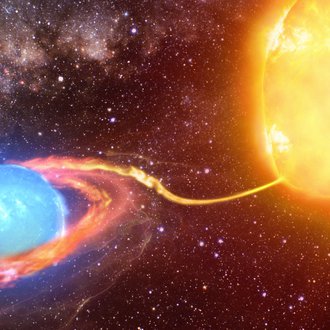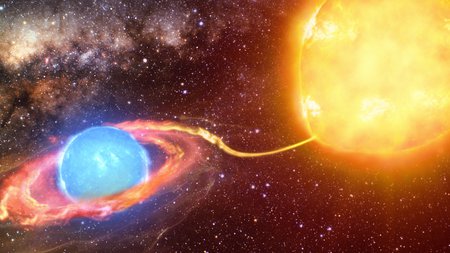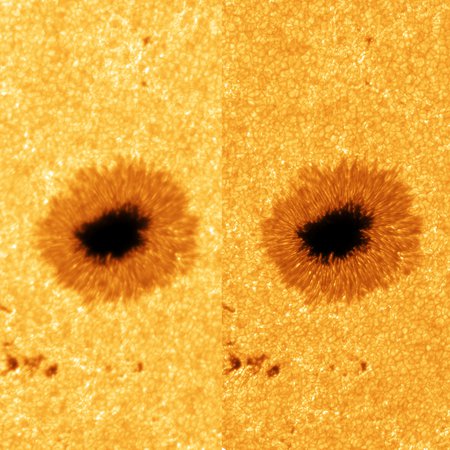Nature letter on RR Lyrae stars as distance indicators
Astronomers find a new type of variable star in a double star system.
RR Lyrae stars are bright pulsating stars which are very important standard candles which can be used to determine distances to distant galaxies. Precise knowledge of the properties of RR Lyrae stars is therefore important. An international team of astronomers seeking to improve the accuracy of the extragalactic distance scale believed to have found such a star in a double star system which would allow the very accurate determination of its distance and mass.To their surprise they found that the star was only half as massive as expected and that the star, in spite of its apperance, is not a true RR Lyrae star but rather a new type of pulsating variable star which has lost a large fraction of its mass to the companion in the double star system. The probabilities to find stars in similar constellations which could be mistaken for RR Lyrae stars is luckily very low, such that distance measurements obtained with RR Lyrae stars remain valid.
Jesper Storm (AIP) is a member of the international team of researchers and a co-author of the publication in the journal Nature. He has been studying the use of pulsationally variable stars as distance indicators for many years.
Further information
Original publication
Pietrzyński, G., Thompson, I., Gieren, W. et al. RR-Lyrae-type pulsations from a 0.26-solar-mass star in a binary system. Nature 484, 75–77 (2012).
Images
An artist’s impression of the double star system.
Big screen size [1000 x 562, 120 KB]
Original size [1920 x 1080, 350 KB]




